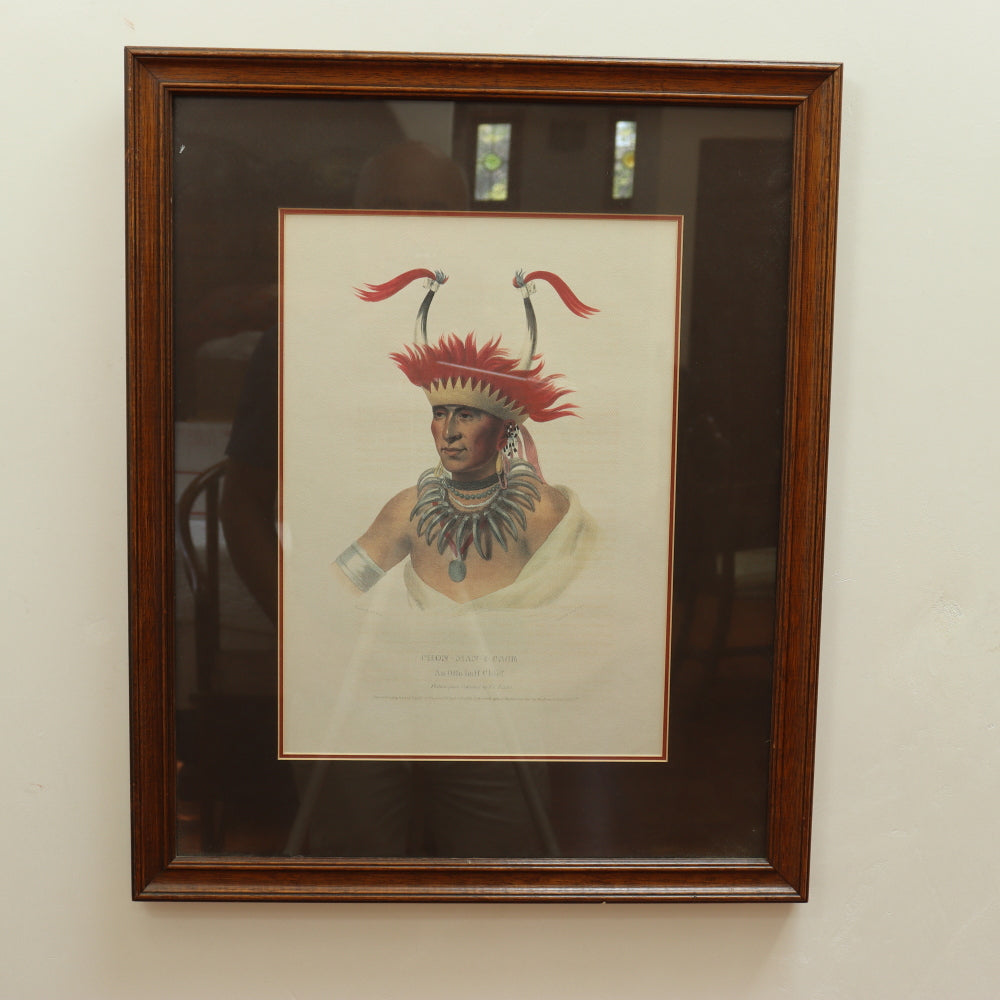AW8-035: Chon-Mon-I-Case An Otto Half Chief Hand Colored Lithograph EC Biddle / Charles Bird King
Plus shipping cost-invoiced separately
Estimated Shipping Cost: $125 - $200
Artist: Charles Bird King
Age: 1800 - 1850
Medium: Print on Paper
Unframed Dimensions: Sight: 14" x 10"
Overall Dimensions: Frame 22" x 18"
Circa 1837 Hand Colored Lithograph by Charles Bird King (1785 - 1862) Printed by EC Biddle from McKinney and Hall's 'Indian Tribes of North America' (a landmark in American culture and an invaluable contemporary record of a vanished way of life.
Dimensions: Sight: 14" x 10"; Frame 22" x 18"
Comments: Chonmanicase, more commonly known as Shaumonekusse, which means Prairie Wolf, was among the first delegation of Plains Indians to visit Washington in 1821. He was outshone by his wife, Hayne Hudjihini, a beautiful eighteen year old, who attracted the attention of President Monroe and his cabinet. Nevertheless, Chonmanicase inspired respect through his dignity and eagerness to learn English. Soon after their return to their native land, Hayne Hudjihini died of the measles. Chonmanicase was devastated and refused to eat. He survived however and lived another twenty years or so. McKenney and Hall's 'Indian Tribes of North America' has long been renowned for its faithful portraits of Native Americans. The portraits are largely based on paintings by the artist Charles Bird King, who was employed by the War Department to paint the Indian delegates visiting Washington D.C., forming the basis of the War Department's Indian Gallery. Most of King's original paintings were subsequently destroyed in a fire at the Smithsonian, and their appearance in McKenney and Hall's magnificent work is thus our only record of the likenesses of many of the most prominent Indian leaders of the nineteenth century. Numbered among King's sitters were Sequoyah, Red Jacket, Major Ridge, Cornplanter, and Osceola.After six years as Superintendent of Indian Trade, Thomas McKenney had become concerned for the survival of the Western tribes. He had observed unscrupulous individuals taking advantage of the Native Americans for profit, and his vocal warnings about their future prompted his appointment by President Monroe to the Office of Indian Affairs. As first director, McKenney was to improve the administration of Indian programs in various government offices. His first trip was during the summer of 1826 to the Lake Superior area for a treaty with the Chippewa, opening mineral rights on their land. In 1827, he journeyed west again for a treaty with the Chippewa, Menominee , and Winebago in the present state of Michigan. His journeys provided an unparalleled opportunity to become acquainted with Native American tribes. When President Jackson dismissed him from his government post in 1839, McKenney was able to turn more of his attention to his publishing project. Within a few years, he was joined by James Hall, a lawyer who had written extensively about the west. McKenney and Hall saw their work as a way of preserving an accurate visual record of a rapidly disappearing culture.










